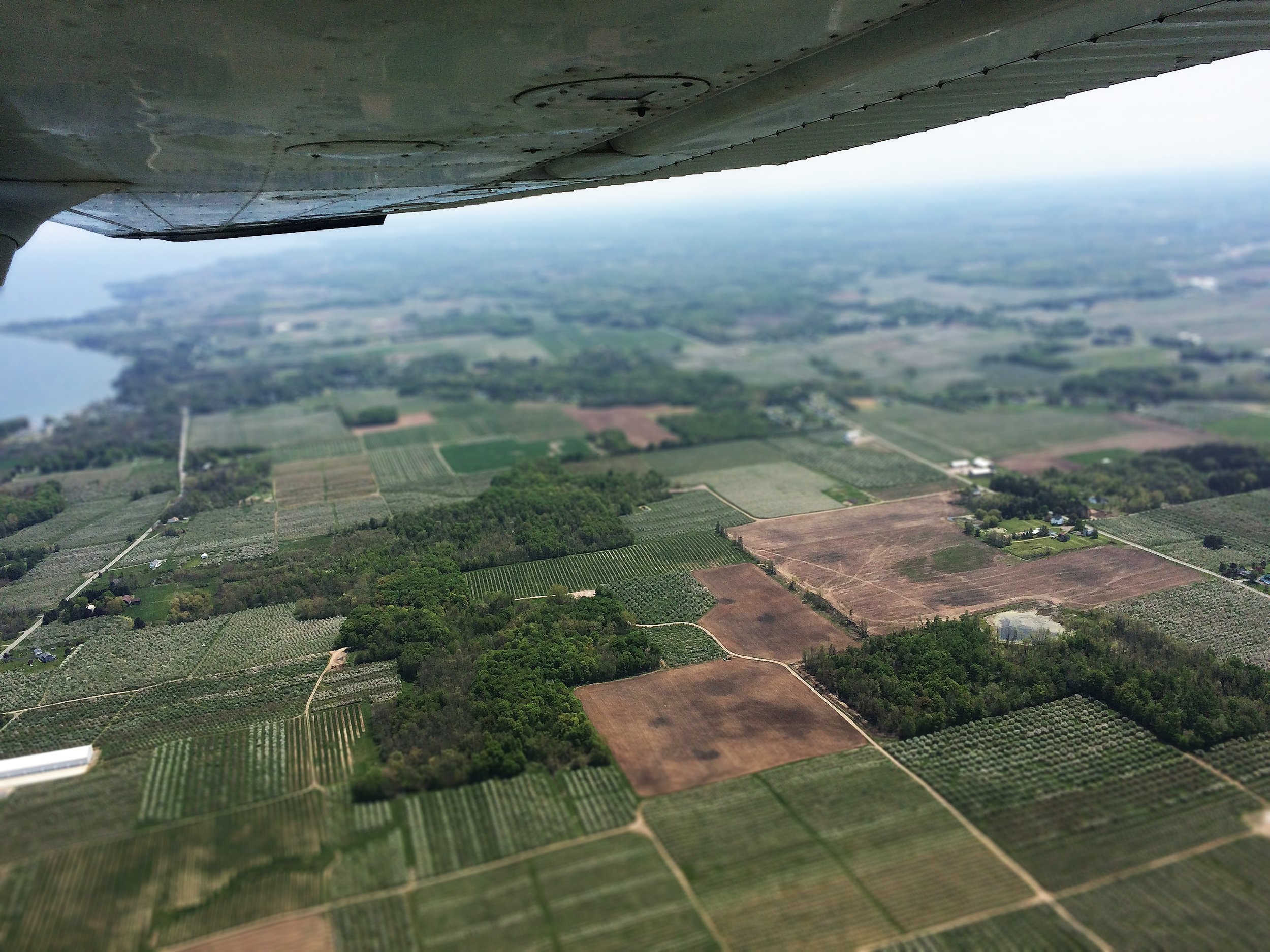
What is Agroforestry?
The Basics
Agroforestry is the integration of fruit, nut and timber trees with animal or crop farming systems.
Strategies such as alley cropping, silvopasture, windbreaks, and riparian buffers can compliment existing yields, increasing your farm's profitability while securing cost savings through ecosystem services such as carbon, water, nutrient, and soil retention.
Alley Cropping
Silvopasture
Windbreaks & Orchard Bands

Why Agroforestry Matters
Agroforestry Decreases Erosion and Nutrient Loss
1 millimeter of soil eroded over 1 acre, equates to 1,069 gallons, or 3.8 metric tons of soil lost. Globally, conventional cropland erodes at a rate of 10 tons per hectare per year. Comparably, erosion rates in a forest range from .004 to .05 tons per hectare per year. This results in trillions of dollars in lost yields and livelihoods.
With decreased erosion comes nutrient retention, keeping nitrogen and phosphorus on the farm and out of our waterways. Carbon-rich soil holds water, increasing a farm’s resilience in the face of drought. Adding trees to agricultural landscapes incorporates the ecological benefits of a forest with the food production of a farm.
Globally, conventional cropland erodes at a rate of 10 tons per hectare per year.
Forests erodes >400x slower than cropland
Agroforestry retains up to 53% more Nitrogen and Phosphorus than cropland.
Agroforestry Increases Biodiversity
Biodiversity keeps the ecological gears turning. A landscape rich with plant species is resistant to pests and disease. Plant diversity gives rise to insect, fungal, and bacterial diversity, such that orchard pests have predators of their own. Perennial plant diversity also feeds the pollinators, which pollinate the plants that feed us.
Globally, forests cover nearly one-third of land area and contain over 80% of land-based biodiversity.
Agroforestry Supports Farm Profit
Agroforestry creates additional income from the harvest of fruit, nuts or timber. In some cases, agroforestry can also reduce operating costs through more effective uses of resources, better control of soil erosion, and improved resilience of farm land.
At maturity, agroforestry introduces
New income from nuts, timber or fruit
Agroforestry Sequesters Carbon
Our carbon cycle is currently broken: by way of fossil fuel usage and land degradation, humans are converting terrestrial carbon into atmospheric carbon far more quickly than we are putting that carbon back into the ground.
A tree is the opposite of a smoke stack. Trees pull carbon dioxide out of the atmosphere and store it in their woody trunk and branches. Just as much carbon can also be stored below ground in the tree’s roots and soil. Via the liquid carbon pathway, tree roots release sugars into the soil. These sugars feed beneficial fungi and bacteria in the soil, which in turn provides the tree with the nitrogen it needs to grow. Dead soil looks like sand or the base path of a baseball field, whereas living soil looks like chocolate cake. The accumulation of soil carbon, along with the deposition of leaves onto the soil surface brings soil back to life.
Adding trees to crop or pastureland sequesters
2 - 8 tons of CO2e / acre / year

Farm Planning Made Easy
Choose crops based on suitability and environmental data, design at the row or field level, and visualize economics for single or multiple farms. Then leverage built-in models for costs, revenues, labor assumptions, yield projections, and more to inform your planning decisions.











